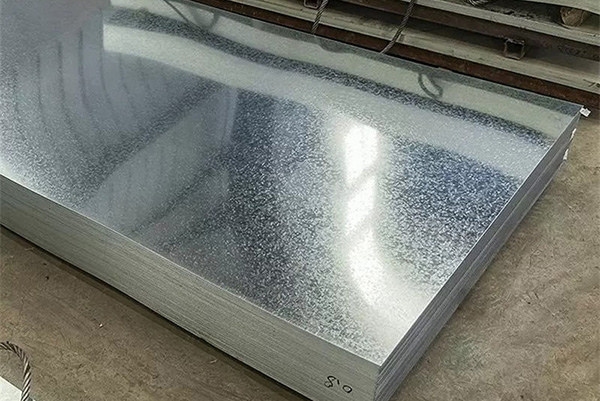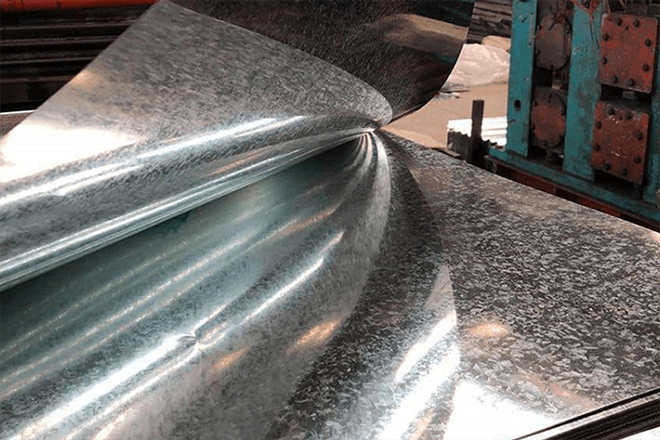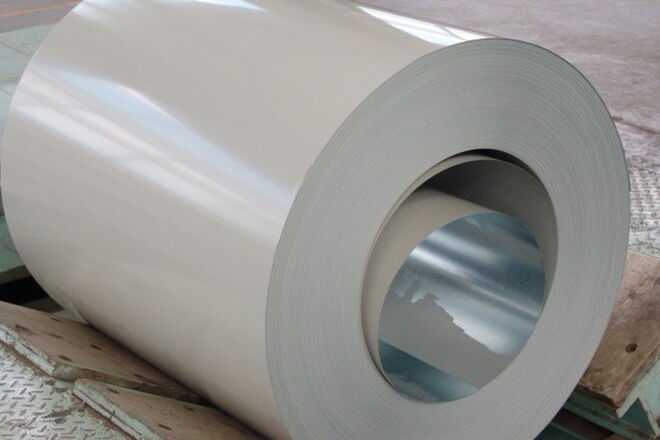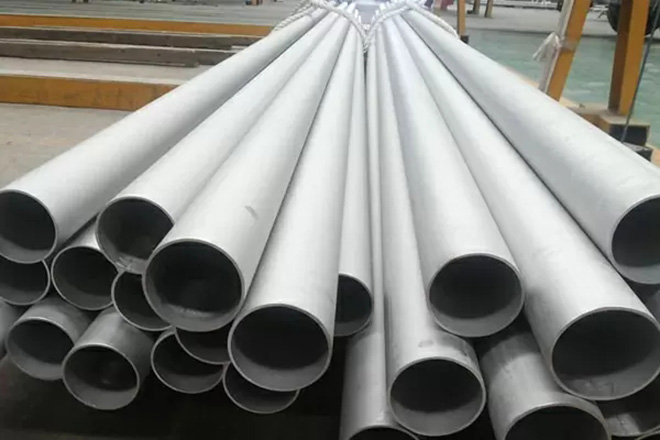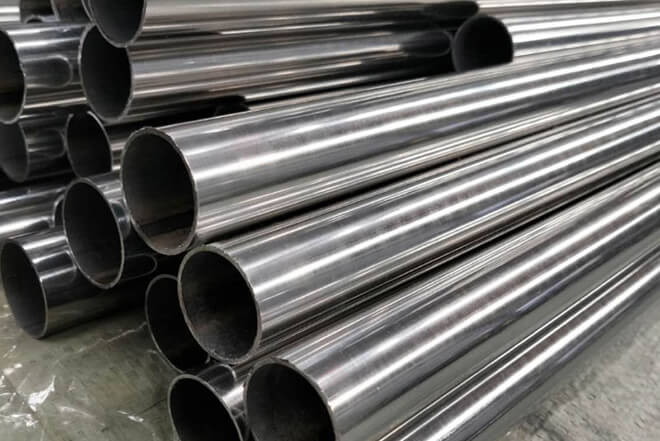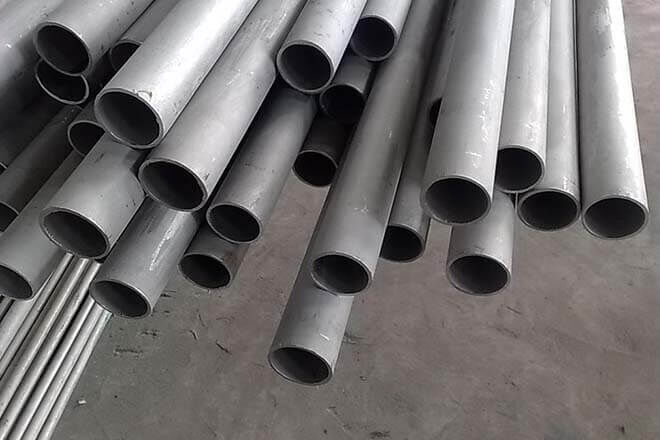- Rich export experience
- 24/7 Hours Service
- Ready to Ship!
Galvanized steels are unexcelled where economy, strength and corrosion resistance are the prime requirements. These products are available with a variety of coating weights, surface finishes and mechanical properties, designed to meet the particular requirements ,of the customer.
The steel core provides high strength and formability, and the zinc coating is unmatched as an effective and economical protection. Zinc is used as a protective coating because of its extremely slow oxidation rate and its protective sacrificial action which inhibits corrosion of the steel. Zinc coated steel sheets are produced on modern continuous hot dip or electro-galvanizing lines, and the finished product is excellent in appearance, formability, and the coatings’ adhesion and uniformity. Zinc coated material can be ordered as Unpassivated or Passivated, Dry or Oiled.
Passivation is a treatment used to prevent storage stain; however it impedes on the effectiveness of paint adhesion, while unpassivated material offers excellent paint adhesion. Light Oil is recommended for temporary protection against storage stain. The following products are available in coils and sheets with a variety of qualities and surface finishes, detailed in the following tables.
What is Galvanizing?
Galvanizing, or galvanization, is a manufacturing process where a coating of zinc is applied to steel or iron to offer protection and prevent rusting. There are several galvanizing processes available, but the most commonly offered and used method is called hot-dip galvanizing.
Galvanized steel is among the most popular steel types because of its extended durability, having the strength and formability of steel plus the corrosion protection of the zinc-iron coating. The zinc protects the base metal by acting as a barrier to corrosive elements, and the sacrificial nature of the coating results in a long-lasting and high-quality steel product.
This versatility makes it applicable to a variety of projects and industries, including agriculture, solar, automotive, construction, and so on. Below, we aim to provide a comprehensive description of how galvanized steel is processed, different galvanization methods, its benefits, and how it is used in these various industries.
The steps in the galvanizing process are as follows:
The steel is cleaned in a degreasing solution
After being cleaned, the steel is pickled by being lowered into a vat of diluted hot sulfuric acid
The steel is then fluxed in an aqueous solution (typically zinc-ammonium chloride)
After the flux, the steel is galvanized through immersion in a vat of molten zinc
Afterward, the steel is inspected for consistency and a complete coating
What are the advantages of galvanized steel?
Many different industries utilize galvanized steel primarily because it has such a wide array of benefits for industries to take advantage of, including having:
Low initial cost compared to most treated steels. In addition, galvanized steel is immediately ready to use when delivered. It does not require additional preparation of the surface, inspections, painting/coatings, etc. sparing companies more costs on their end.
Longer life. With galvanization, a piece of industrial steel is expected to last more than 50 years in average environments, and can last over 20 years with severe water exposure. There is no maintenance required. The increased durability of the steel’s finished product also increases the product’s reliability.
The sacrificial anode ensures that any damaged steel is protected by the surrounding zinc coating. It doesn’t matter if the steel section is completely exposed; the zinc will still corrode first. The coating will corrode preferentially to the steel, creating a sacrificial protection to the areas that are damaged.
Rust resistance from the zinc coating. The iron elements in steel are incredibly prone to rusting, but the addition of zinc acts as a protective buffer between the steel and any moisture or oxygen. Galvanized steel is very protective, including sharp corners and recesses that couldn’t be protected with other coatings, making it resistant to damage.
What industries utilize galvanized steel?
Galvanized metals are used everywhere!
The bodies of cars and many bicycles are made from galvanized metals. Some drinking water pipes are still made from galvanized steel. Cool rolled sheet metal is also frequently galvanized. Nuts, bolts, tools, and wires of all kinds are now galvanized because it is a cheap process, and helps boost the metal’s lifespan!
Galvanized steel, in particular, is often what is used in modern “steel frame” buildings. Galvanized steel is also used to create structures like balconies, verandahs, staircases, ladders, walkways, and more. Galvanized metal is the ideal choice if your project will live outside after it’s done. Fences, roofs, outdoor walkways, these are all great choices for galvanized metal!
Wind & solar industries – Solar projects must have a continuous workflow once installed and any repairs/maintenance results in disruption to service (a.k.a. revenue loss). This means that hot-dipped galvanized steels are popular in solar projects for their corrosion protection. It is also popular for its ‘environmental’ friendliness because it does not produce emissions and ensures decades without maintenance. For example, it is often utilized in the agriculture industry because the equipment is susceptible to being easily corroded, creating a demand for tougher, more resilient equipment. Hot-dip galvanized steel provides corrosion protection that can often last for decades, even when exposed to the harsh environment of farming.
Automotive industry – Though only used on luxury models up until the 1980s, the use of zinc-coated bodies for automobiles is now the norm in auto manufacturing. The ‘body-in-white’ of a car makes up about 80% of the body, all using galvanized steel. The rust -resistance of galvanized steel is also a good marketing tool for the automotive industry because it can provide ‘anti-rust warranties’ to customers.
Construction industry – Whether for residential or commercial, the durability of galvanized steel has made it popular for over a century in the construction industry. It is also selected for construction because of its aesthetics; The ‘shine’ that galvanized steel provides gives it a contemporary feel and is popular in modern architectural designs. Also, it isn’t just used for large structural pieces but things like fencing, gutters, rails, tubing, poles, and much more.
Telecommunication industry – Phone lines are not an easy maintenance job, they are tall and often difficult to reach. Hot-galvanized steel can be used on phone wiring and equipment boxes which decreases the risk of damage and need for maintenance at all.
Quick Detail
| Production Name | GI Galvanized steel plate |
| Steel Grade | SGCC,SGCH,G550,DX51D,DX52D,DX53D,S280GD,S350GD |
| Width | 914mm,1000mm,1200mm,1219mm,1220mm,1250mm 1500mm Or According To Customer's request |
| Thickness | 0.12-4.5mm |
| Length | In Coil Or as customer’s request |
| Spangle | No spangle, With spangle |
| Zinc Coating | 30-275g/m2 |
| Surface Treatment | Light oil,Unoil,dry,chromate passivated,non-chromate passivated |
| Weight per pkg | 2-5 Tons or as customer’s request |
| Color | RAL Code Or According To Customer's Sample |
| MOQ | 25 Tons |
| Package | Standard Sea Worthy Package |
| Application | Roofing,Rolling-up Door, Steel structure,Building & Construction |


